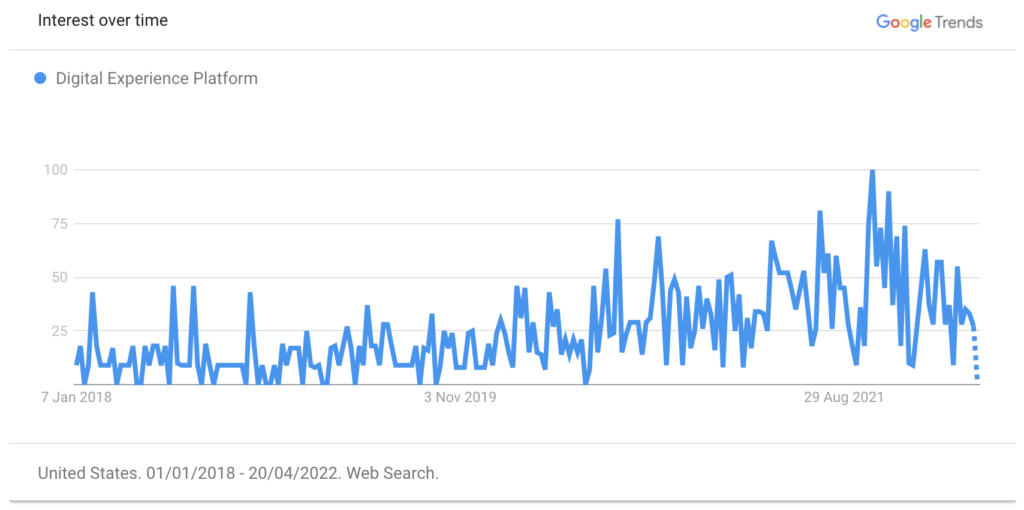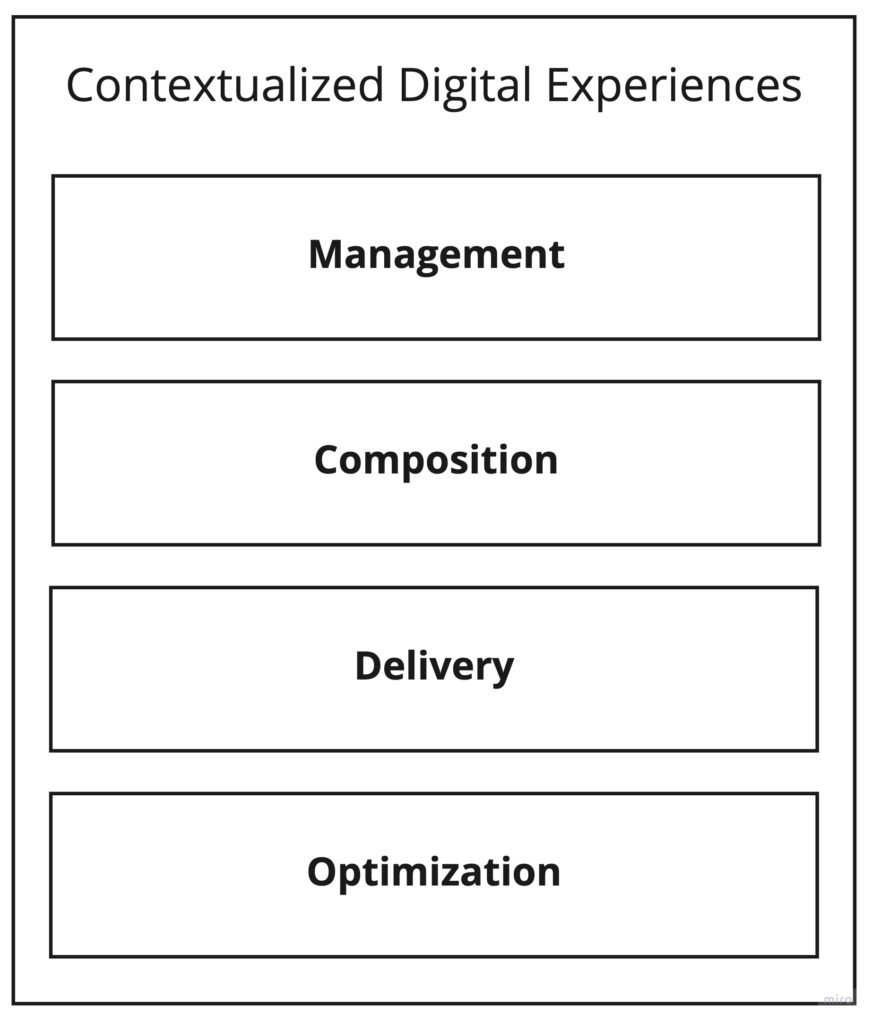Digital Experience Platform (DXP) as a term has been long existing in the industry. In this blog post, we’ll take a look into what exactly DXP contains and understand the value behind it.
It is interesting to see the increase in interest in Digital Experience Platforms post-pandemic, fueled by the need for delivering better digital experiences to customers?

“A digital experience platform (DXP) is an integrated set of core technologies that support the composition, management, delivery and optimization of contextualized digital experiences” – Gartner

THE VALUE proposition BEHIND the rise of DIGITAL EXPERIENCE PLATFORM
The following could be the key trends that drove this increased interest in DXPs:
- Need for better Content Operations: More often than not CMS is at the core of DXP. Content Operations are no longer managed by a single team and thus a specialized set of solutions, technologies, and platforms are required. Such as PIM systems for product-related content, and DAM solutions for Media content operations.
Read more here – https://blog.hubspot.com/marketing/content-operations - Rise of Headless CMS: the desire to separate presentation from content has been long existing and with the rise of multi-experience delivery having a headless solution makes operational sense. Create content once and deliver across channels, audiences, and devices to provide seamless and unified experiences.
Read more here – https://www.contentful.com/r/knowledgebase/what-is-headless-cms/ - Composable DXP: There is a strong desire among organizations to assemble their own DXP thus reducing dependency on a single solution or vendor and thus increasing flexibility, modularity, and business agility.
Read more here – https://www.sitecore.com/blog/digital-transformation/are-composable-dxps-the-future-of-digital-experience - Content plus commerce: Due to the COVID-19 pandemic there has been a sudden rise in digital commerce and content consumption. Content that can drive commerce and content that enhances the value of digital commerce is in high demand.
Read more here – https://www.bigcommerce.com/articles/headless-commerce/content-and-commerce/ - The rise of Customer Data Platforms: Every marketer dreams of having a 360-degree view of their customers in order to generate greater ROI on their marketing efforts. CDPs provide this valuable capability by sourcing information from various siloed sources and then activating the information to good use.
Read more here – https://segment.com/resources/cdp/
DXP core capabilities
Gartner identifies the core capabilities (provided either natively or through an integration) of a DXP as:
- analytics and optimization
- applied artificial intelligence
- architecture and platform design
- collaboration and knowledge sharing
- cloud support
- content management
- extensibility
- multi-experience support
- navigation, search, and insight
- personalization and context awareness
- security and access control
- account services
- customer data management
- customer journey mapping and presentation and orchestration.
The highlight here that is most important is the integration of these capabilities that can support various business use cases:
- Customer Data that fuels multi-experience, multi-channel support, and personalization
- Content Management that is supported and backed by analytics and optimization
- Collaboration, knowledge sharing, and multi-cloud support for flexible architecture and platform designs
- Applied Artificial Intelligence that drives insight and predictability
Note: Integration here just does not mean API integration but more fundamentally and conceptually how well multiple capabilities support and interact with each other.